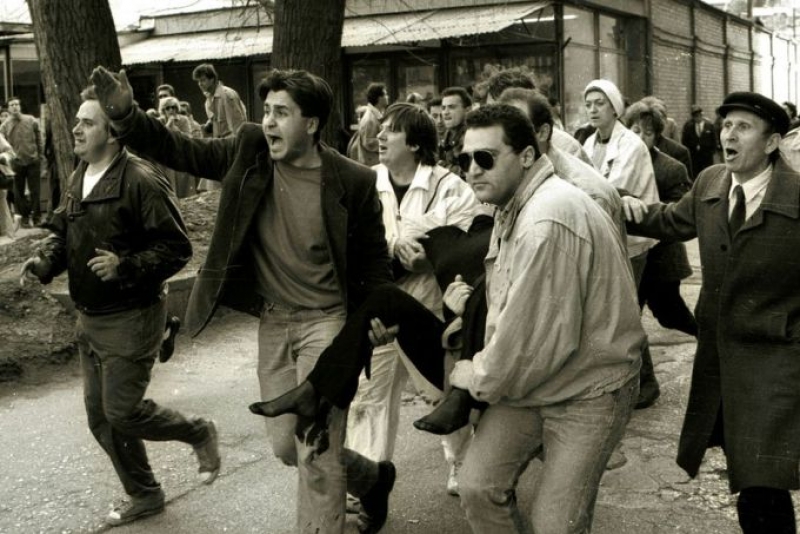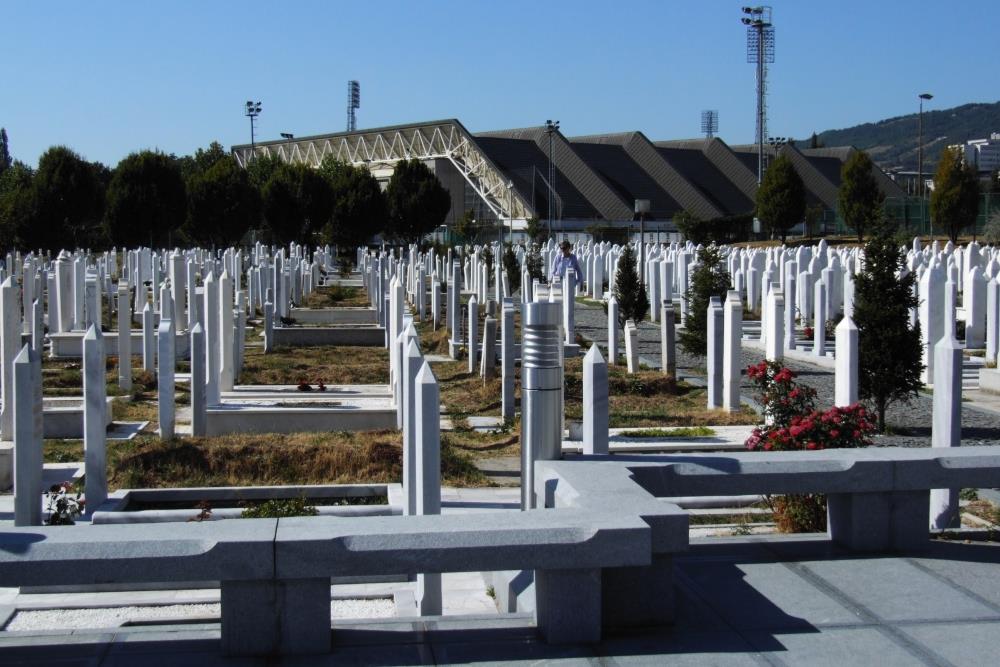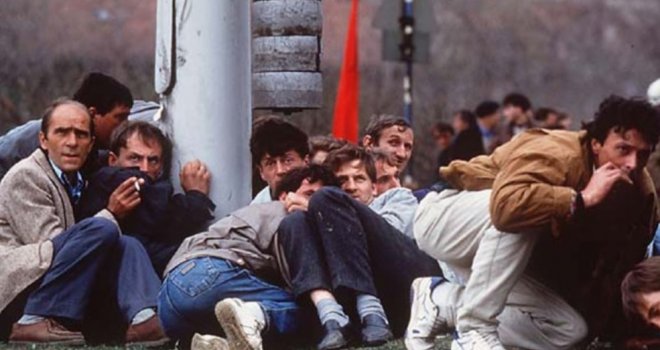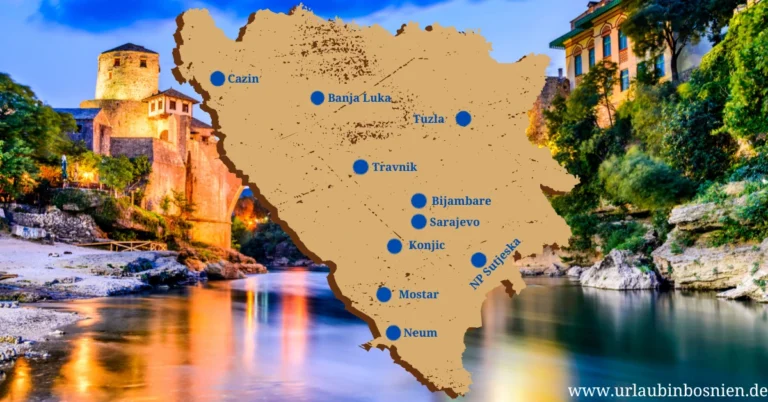The Siege of Sarajevo: A Story of Love, Loss and Survival
Taking Sarajevo was the main goal of the aggressors, and on April 6, 1992, the day the European Community countries recognized the independence of Bosnia and Herzegovina, the first infantry attacks on the city began. The siege of the capital of Bosnia and Herzegovina began to tighten.
Part of the population, with the help of the so-called Yugoslav People's Army, led by the Serbian Democratic Party, decided to leave the city, take up positions on the surrounding hills and begin the siege of the city.
Unfortunately, one of the brightest moments in Sarajevo’s history was soon followed by a period of the most horrific experiences in the city’s 500-year history.

The first civilian victims of the Siege of Sarajevo, Suada Dilberović and Olga Sučić, were killed on April 5 on the Vrbanja Bridge, not far from the building of the then Parliament of the Socialist Republic of Bosnia and Herzegovina, in front of which civil demonstrations for peace were taking place.
Fire was opened on the protesters. The former Vrbanja Bridge now bears the name of these two brave women, and a plaque in its center, facing east, where the first rays of sun appear every day, reminds and warns intentional and casual passersby about the city's difficult past.

The Serbian aggressors’ operations to encircle Sarajevo began in April – and by the beginning of May 1992 the siege was fully established.
The Siege of Sarajevo stretched for more than 65 kilometers and consisted of 260 tanks, 120 mortars, machine guns known as "death scatterers," multiple rocket launchers (MRLs), snipers, and countless pieces of light weapons. By simple calculation, one can conclude that there was an artillery piece every 35 meters within the Siege of Sarajevo.

The targets were the city and its inhabitants. At the beginning of the siege, all the main institutions of city life were destroyed. In one of the worst attacks during the entire siege, on May 2, 1992, dozens of important buildings in the city were destroyed, including the main post office, leaving the city without telephone connections. Public transport was suspended. In the following days, the city was left without water supplies, electricity and gas, and food supplies ran out.
The targets of the daily bombardment included hospitals, schools, mosques, churches, synagogues, maternity hospitals, libraries and museums. Large numbers of civilians were killed daily and several massacres occurred during the siege. Among other things, dozens of citizens were killed in one attack while standing in line waiting for bread and water.
Since the city cemetery was in the area of enemy artillery and sniper fire, green urban areas and the adjacent areas of the Olympic Stadium “Koševo” were turned into cemeteries where the citizens of Sarajevo killed during the siege were buried.

Due to sniper fire and bombings, funerals were often held under cover of night. Despite citizens' hopes that the brutal attack on Bosnia and Herzegovina would trigger international military intervention, they soon realized they were mistaken. Instead of the expected intervention, an arms embargo was imposed, effectively tying the hands of the city and the country's defenders.
The city was abandoned to heavily armed attackers, who were significantly supported by forces from Serbia. The city's fate and survival was largely in the hands of unarmed citizens in a city without electricity, water, gas or basic food supplies. The defenders, led by modestly armed police forces and territorial defense, looked more like people going out in their pajamas at night.
These unarmed people would become the army of Bosnia and Herzegovina. These unarmed people, or those with homemade guns, stood on defense lines every day, desperately fighting off the enemy's attempts to enter the city.
The defensive lines around the city often had very long stretches of land defended by only a few rifles and a very limited amount of ammunition. In some places only the walls of houses and buildings separated the front line.
Until June 1993, the Yugoslav People's Army (JNA) barracks inside the city posed a specific problem, as their soldiers also fired on the citizens of Sarajevo. However, with their evacuation from the city, the defenders gained access to a certain amount of weapons and ammunition. During this period, the attackers intensified their attacks on the city, and the city was once again left with minimal means of defense.
Most of the weapons and ammunition were captured as spoils of war by the defenders in battles, and a so-called special-purpose industry was started in the city, tasked with producing weapons. Aside from a shortage of raw materials, the city lacked fuel and electricity, which severely limited production. Without weapons and ammunition, the city was doomed to disappear.

On average, 329 shells of various calibers with enormous destructive power fell on Sarajevo every day during the siege. On July 22, 1993, an incredible record of 3,777 shells fired at the city was recorded. It is estimated that over 50,000 tons of artillery shells were fired at the city during the siege.
Almost every civil, cultural and religious object was damaged, but the population of Sarajevo suffered the most. During the siege, 11,541 people were killed in Sarajevo, registered with name, surname, place of birth and date of death, including 1,601 children. In addition, over 56,000 people were injured to varying degrees.
Systematic killings were directed not only against adult men, but also against children, women, the elderly and the weak, without making any distinctions as to age, gender or nationality. The enemy's sole aim was to kill as many people as possible. According to all objective analyses and military expert assessments, Sarajevo was to fall within a few days.
This was also the prediction of Radovan Karadžić and the rest of the SDS leadership. However, it became clear that everyone had underestimated Sarajevo, this miracle of Bosnian resistance that not only did not disappear, but defended itself for an astonishing 1,425 days.

After the UN hostage-taking, numerous horrific massacres in Sarajevo and the genocide in Srebrenica, the international community was finally forced to act. At the end of August 1995, NATO launched air and ground attacks against the army of Republika Srpska, a part of Bosnia and Herzegovina, dealing it a severe blow from which it could not recover. The Dayton Peace Agreement was signed in December 1995, but even after that, the aggressors did not fail to remind Sarajevo of all the suffering of the past days.
On January 9, 1996, a shell was fired from Grbavica, which was still under the control of the Army of Republika Srpska. It hit a tram and killed a woman while wounding 19 other people. These were the last victims of the siege. The Bosnian authorities officially declared the end of the Siege of Sarajevo on February 29, 1996.






